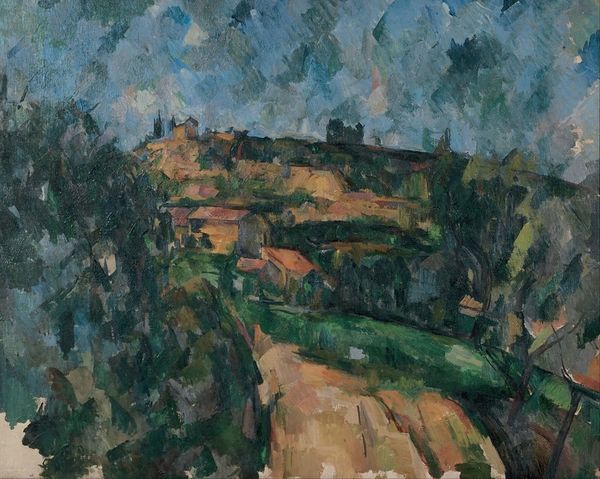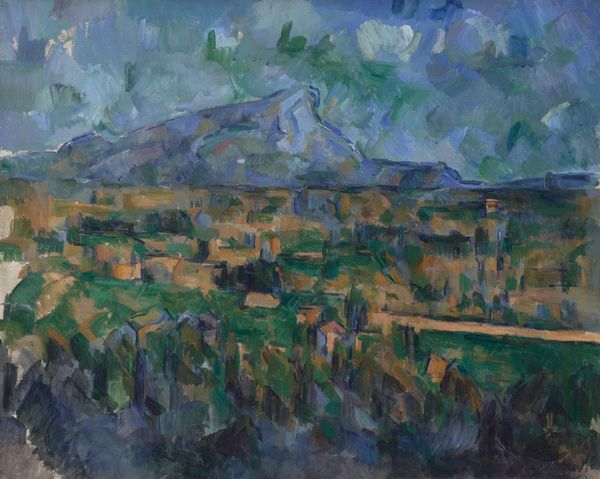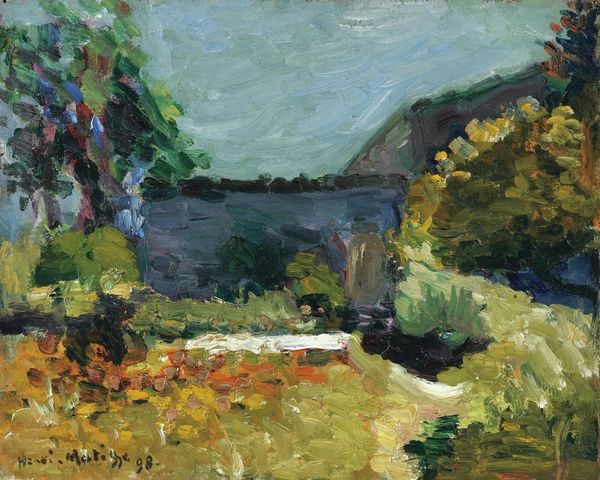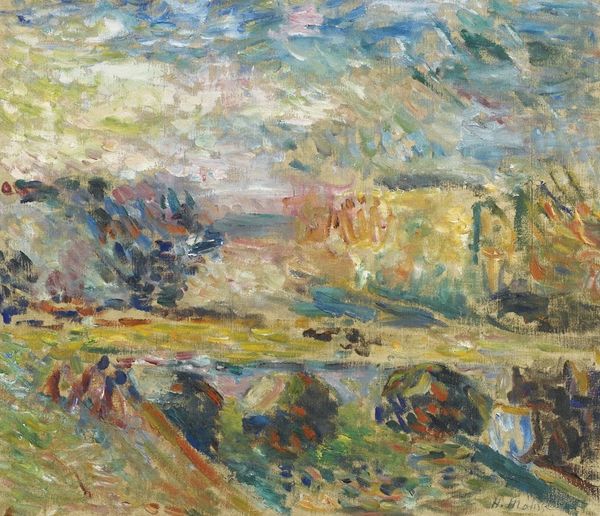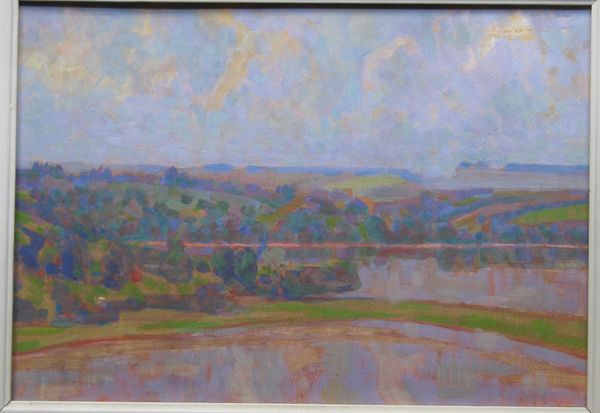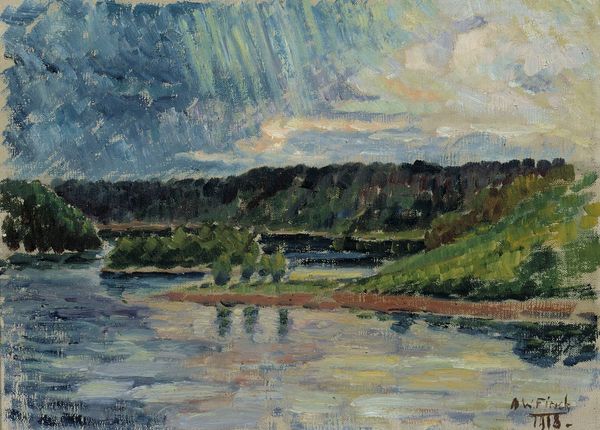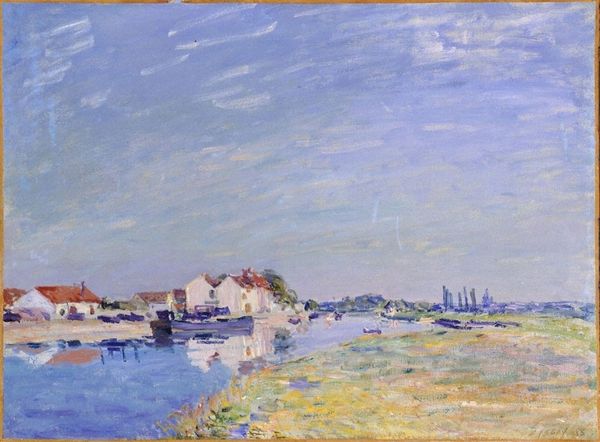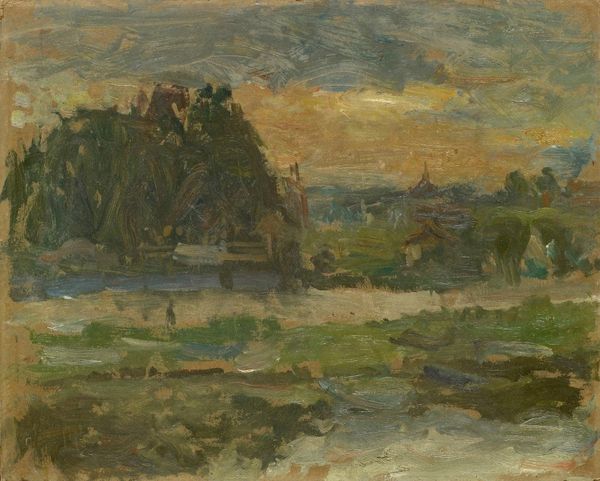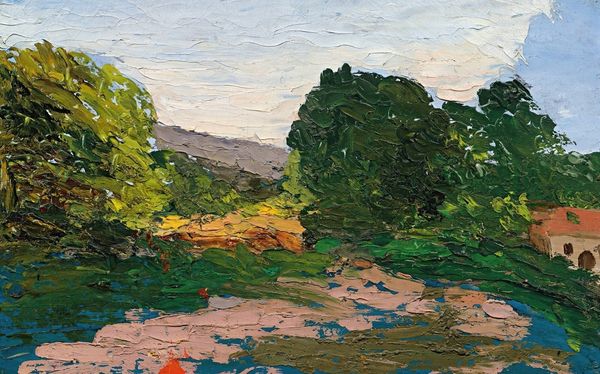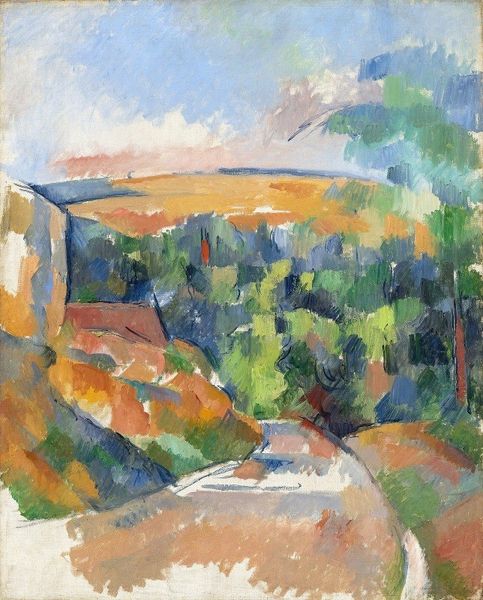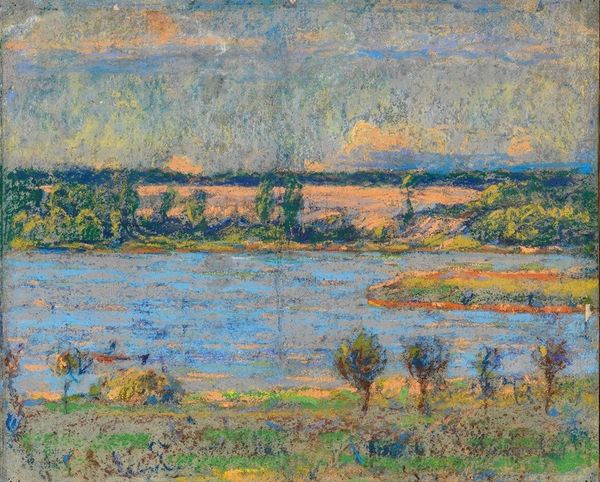
Copyright: Public Domain: Artvee
Paul Cézanne created "Banks of a River" using oil on canvas, offering a landscape that challenges traditional artistic norms. Cézanne, who lived through France's transformations in the 19th century, including industrialization and shifting class structures, often depicted landscapes to explore the changing relationship between humanity and nature. In this painting, Cézanne departs from idealized landscapes, emphasizing instead the materiality of paint and the act of seeing. His use of visible brushstrokes and a somewhat muted palette reflects a move away from academic painting, aligning him with the emerging Impressionist and Post-Impressionist movements. Cézanne once said, "Painting from nature is not copying the object; it is realizing one's sensations." This sentiment captures his intention to convey personal experience over objective representation. The emotional aspect of this work lies in its subtle challenge to conventional beauty, inviting viewers to find value in the raw, unpolished depiction of the natural world. This piece reflects a broader societal shift towards valuing individual expression and subjective experience, marking a profound change in the art world.
Comments
No comments
Be the first to comment and join the conversation on the ultimate creative platform.
